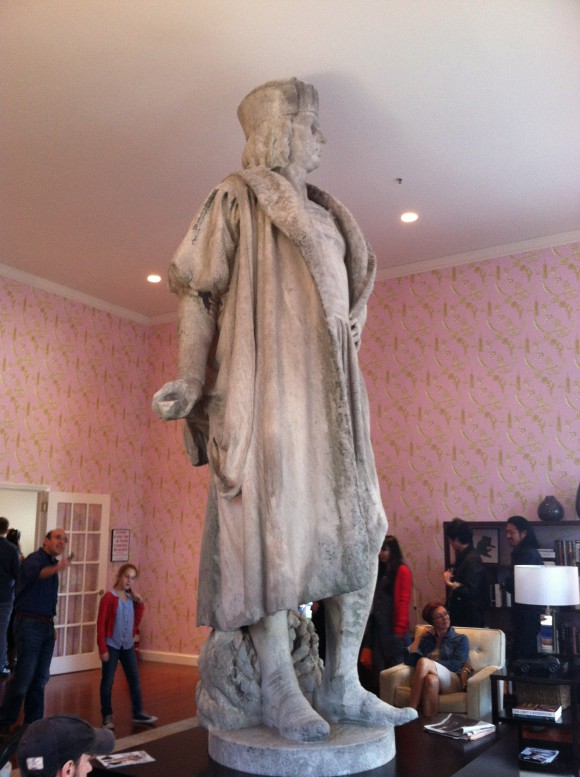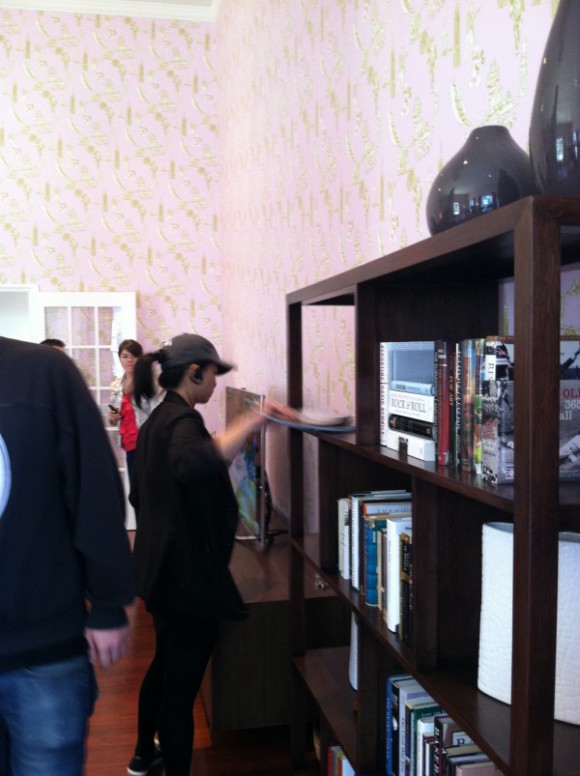Tatzu Nishi’s installation Discovering Columbus provides viewers with the opportunity to uncover and explore the famous monument of Christopher Columbus on a personal level. Nishi’s role is that of both artist and cultural guide, as he presents this statue within the comforts of an upscale apartment living room, styled in a hyper-American fashion, with the intention of providing the public with a free opportunity to experience the statue.

Columbus Circle and the statue from which it derives its name are together a major New York City landmark. As the point from which all distances to and from New York City are measured, the statue is physically the center of Manhattan. The fact that the Public Art Fund was able to open up the center of the city to free, public access, is in itself a huge feat and accomplishment.
Yet the piece itself represents two ways of viewing art that are incompatible in the present day, thus involving viewers in a puzzling experience. Nishi has taken this public statue down the road of privatized ownership of artwork by objectifying the monument and placing it inside a closed-off representation of a blatantly Americanized Manhattan apartment. In its original context, the monument is innately free and open to anyone walking past, but inaccessible on a personal level.
When the statue is re-contextualized as an piece of art inside a home, it becomes a private object, secluded and removed from public access. Only a self-selecting audience can actually see the piece, an audience that has been informed of its installation far enough in advance to reserve and print out the free tickets, an audience that feels welcomed to participate in the act of seeing the piece in an isolated setting. I am unsure if Nishi intended the discussion of an artwork’s exclusivity to be extracted from his piece of public artwork, but his presentation of the statue in this setting seems extremely paradoxical.

And if the artist’s primary intention was to give the viewer time to observe and study the monument within the comforts of what could be their own home, the format of the exhibition and its production were once again incompatible with his goals. A living room is meant to be cozy, lived-in, if not a bit messy. In this swanky apartment, there were at least four attendants on hand to replace a magazine back to its plotted location on the coffee table the instant you put it down, or to move your chair back into place right after you stood up. The appeal and intimacy of a living room were lost, along with the installation’s expected experience. I was surprised that I was not surprised to see a giant statue in the middle of a living room, for it felt so clearly like an art installation.
My discomfort in viewing this piece lies in the not-so-clear or true status of the piece as free and open to the public. Discovering Columbus uneasily teeters the line between public and private art. I was not as moved by Nishi’s re-contextualization of the statue as I had hoped, for it felt more like an exclusive showing inside a private foundation or family home than a piece of public artwork.
